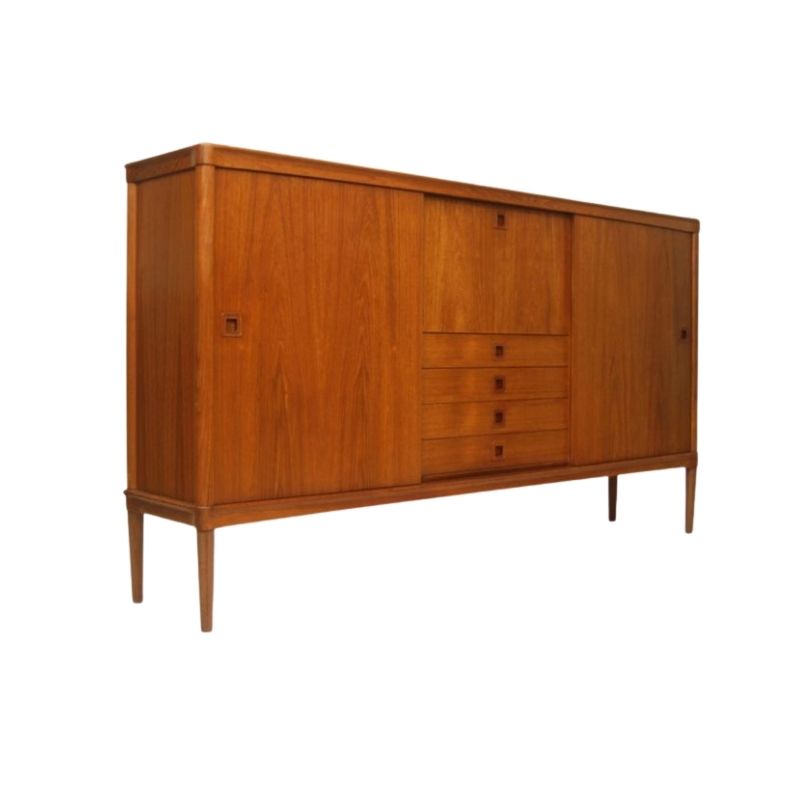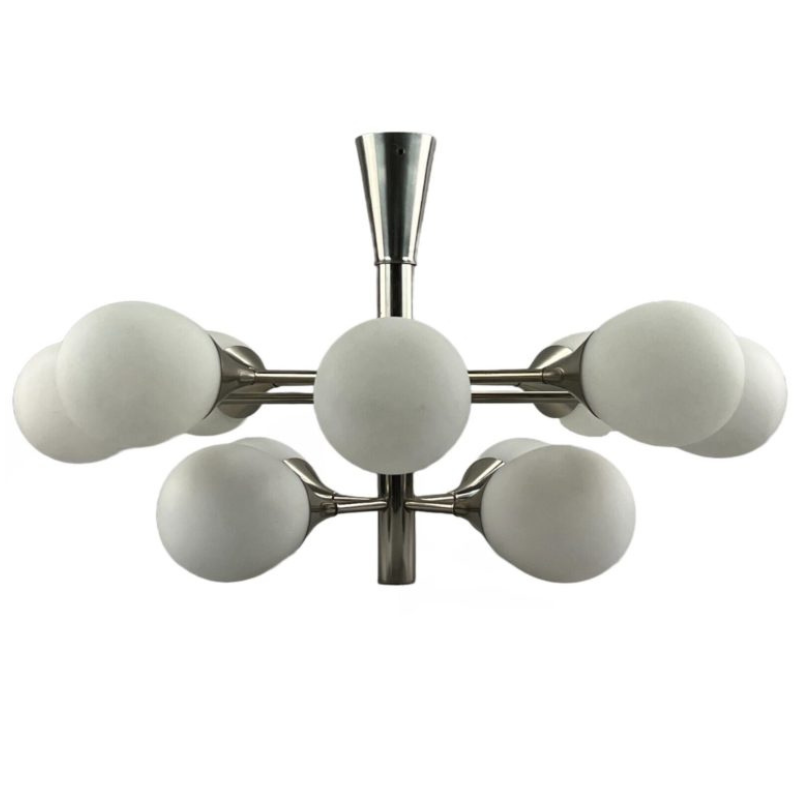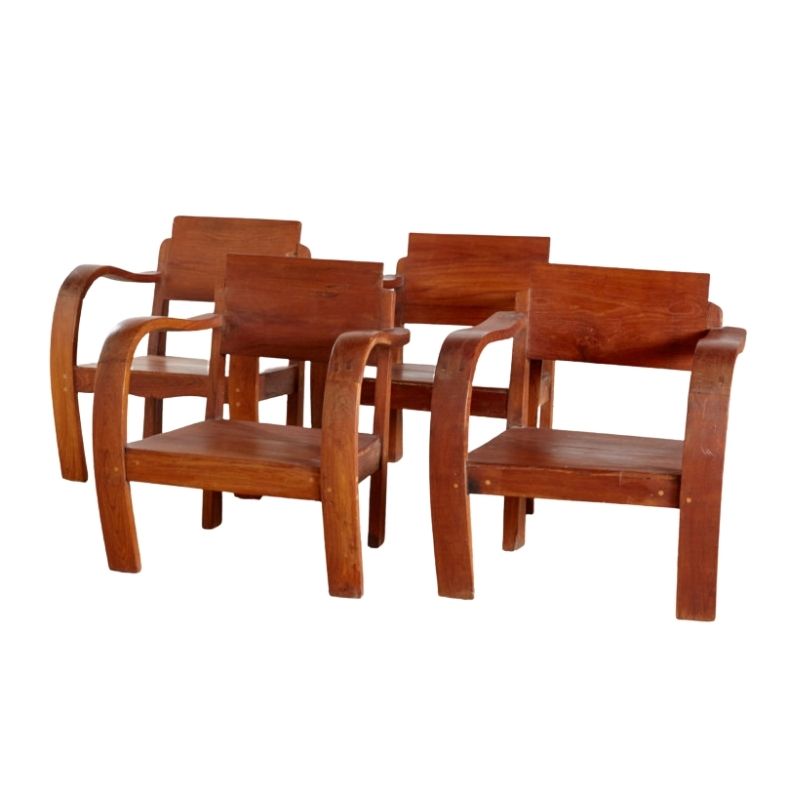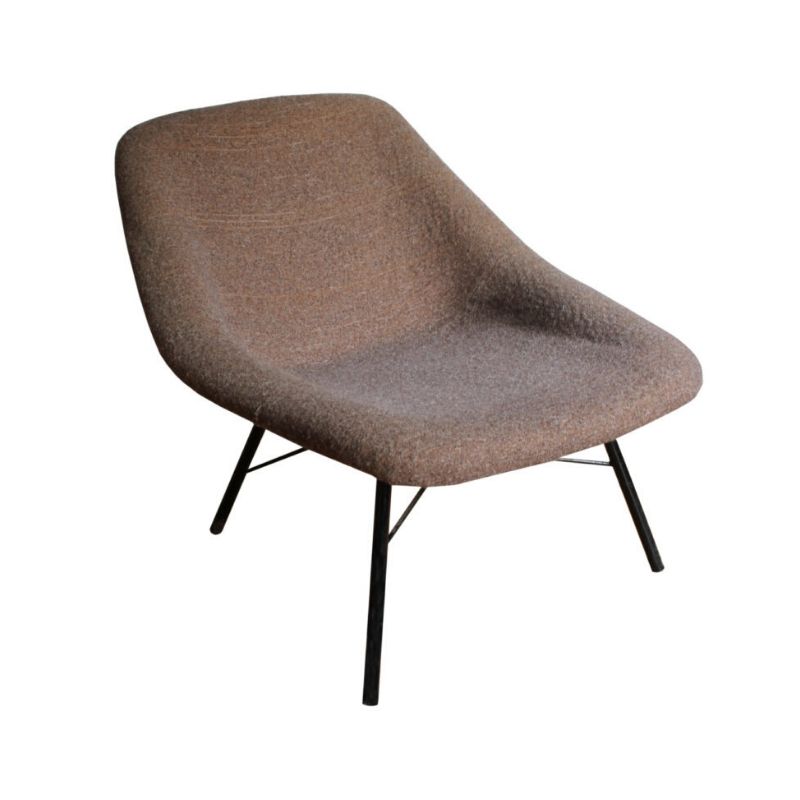Nice. Do you have the base ?
This top embodies an aspect of wood's unique character which could present a problem to the table's longevity, under extreme circumstances. Because wood can shrink and grow in width (that is, across the grain) with changes in humidity and temperature, these three "rounded triangles" might deviate from the precisely-calculated 120-degree mating edges; that is, the angle could shrink or grow by a degree or more, putting much stress on the butterfly keys. In the worse-case scenario, the force generated by a severe change in the width of the pieces, and thus in the angle, could split the short grain against which the outside face of the butterfly bears.
But it isn't likely, and (as we see) hasn't happened to date (though there's a visible taper to two of the three joints). A beautiful table top, for sure.
The butterfly key in the bottom left of the photo looks like it is perhaps split.
But I somehow suspect that the table top is not solid wood. I suspect that it is veneer over a dimensionally stable substrate. The grain looks a lot like veneer to me. And, if the maker were going to risk this table in solid wood, it is hard to believe it would be executed in such wide flat sawn boards, which is just asking for cupping (instead of narrower quarter sawn boards for the greater dimensional stability).
Good points, Leif. There is even a hint, at first glance, of some sort of edge-banding. But I don't see that at closer inspection. The grains don't match on the three segments, which is an argument for solid wood -- but I expect you're right nevertheless.
Could the keys have been made with the grain going the wrong way ? How could one have split as shown, otherwise. Most interesting.
Well if it isn't a real key then you can make it with the grain going any way you choose. And the butterfly keys might not even hold the top together.
I find the uniformly dark edge odd. If there is any edge banding, it is underneath the veneer, which is extremely dangerous on a circle, as the end grain can not be protected, and so the banding swells rapidly with humidity changes and breaks the veneer. The only way to protect the edge banding to slow the wood movement would be to do a bent lamination, which is pretty involved for edge banding (I've seen it on a Karl Erik Ekselius table). Or just do away with meaningful edge banding and glue a strip of veneer around the edge. Or do like the Americans did so often and leave the substrate exposed on the edge, perhaps with dark paint to conceal it.
If you need any help, please contact us at – info@designaddict.com










